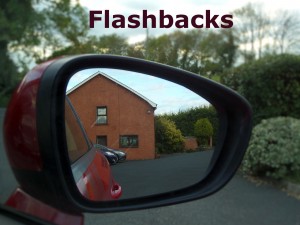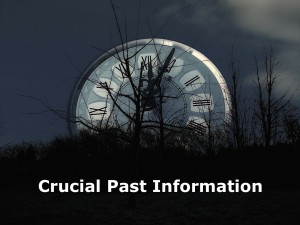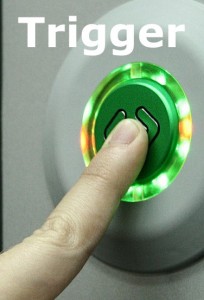While researching whether or not to use flashbacks, I received warnings from, “Don’t,” to “If you must.”
Reasons to resist flashbacks.
They often:
- stem from the author’s wish to explain everything – info dumps of old news.
- tell information that can be shown through current scenes and dialogue.
- may indicate, if especially long, that the main story should’ve started earlier.
- beg that a prologue may be a better vehicle.
- halt the story, distract the reader, and cause a reader to lose interest.
- remove suspense, ending the reader’s desire to know a secret.
- are unnecessary if they don’t advance the present plot, or exist for no good reason.
Reasons to include flashbacks.
They:
- assist a dual-story – chapters alternate between a past time and a present time
- provide crucial information when there’s no other way to include it.
- provide backstory in a more dramatic, immediate way than a character in the present telling it.
- may work for a prologue to reveal something essential to the story that happens several years earlier in the character’s life or in the story world.
- provide a device to tell the story of a character with memory loss.
Tips for Writing Necessary Flashbacks
General:
- Don’t use flashbacks as a cop-out to avoid writing difficult present story.
- Don’t include more than one or two flashbacks.
- Let go of a merely interesting flashback from a character’s biography.
- Use flashbacks only after the reader’s engaged in the story and knows the character (after several scenes).
- Make sure a flashback advances the main story.
- Make sure a flashback scene, like a main-story scene, has goals, motivations, and resolutions.
- Give long flashbacks their own chapter or scene.
- Hold back flashbacks until the reader must know the information – keep the suspense going.
- Have flashbacks follow exciting scenes so the reader will want to return to the main story.
Specifics:
Tip 1: Make it clear the character is going back in time.
- Give the character a trigger – he sees an object, smells a scent, or experiences an action.
- For stories written in past tense, use past perfect tense a few times when entering the flashback. Once in, switch to past tense until near the end of the flashback, then switch to past perfect a few times. After leaving the flashback, return to past tense. (Limits cumbersome past perfect.)
For stories written in present tense, use the simple past in the flashback.
Tip 2: Write the flashback so it:
- Serves a purpose – shows what shaped characters into who they are now or shows past story world.
- Engages the reader.
- Is limited to key moments.
Tip 3: Write ending sentences that transition the reader and character from the flashback.
- Use another trigger – abrupt or easing.
- Change verb tense as mentioned above.
Tip 4: After the flashback, the reader must see the character or story world in a new light as they read forward in the present.
Flashbacks: dangers, benefits & tips for writing necessary ones. Click to tweet.
For what other reasons should we use or not use flashbacks?






 RSS - Posts
RSS - Posts



Thanks for sharing about Tips for Writing Necessary Flashbacks…………